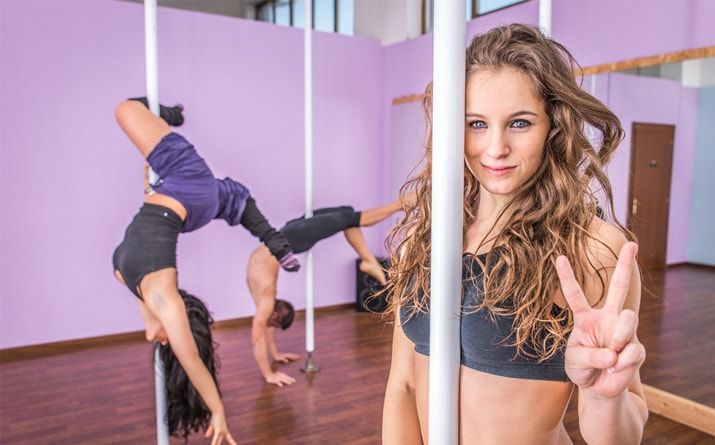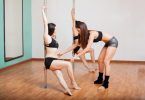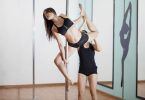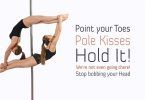Pole dancing is a physically demanding and exhilarating sport that requires strength, flexibility, and artistry. However, pole dance injuries can occur without proper precautions. In this article, we will explore nine fundamental rules to prevent injuries in pole dancing, providing essential guidance for both professionals and beginners.
Minimizing Risks: Preventing Pole Dance Injuries
Warm-Up: Preparing Your Body to Avoid Pole Dance Injuries
A proper warm-up is essential before engaging in pole dancing. It involves dynamic movements and stretching exercises to increase body temperature, improve blood flow, and prepare the muscles and joints for the physical demands of the activity. It is important to maintain warmth throughout the training session to minimize the risk of injuries. Avoid long pauses and incorporate active recovery exercises during rest intervals to keep the body primed for optimal performance. Remember, a thorough warm-up is key to injury prevention in pole dancing.
Strengthening and Flexibility: Key to Injury Prevention in Pole Dancing
To prepare your body for pole dancing and minimize the risk of injuries, focus on strengthening and improving flexibility. Engage in exercises that target different muscle groups, build aerobic and anaerobic stamina, and enhance overall strength. Incorporate resistance training, bodyweight exercises, and functional movements. Additionally, prioritize flexibility training to increase your range of motion. Familiarize yourself with suitable drills for each move and transition, and seek guidance from a qualified instructor. By combining strength, flexibility, and proper technique, you can reduce the likelihood of injuries and optimize your performance in pole dancing.
Gradually Increasing Training Time to Prevent Pole Dance Injuries
Gradually increasing training time and difficulty is essential in pole dancing to prevent injuries and combat fatigue. It’s important to give your body time to adapt and progress gradually. Start with shorter training sessions and gradually increase the duration as your fitness level improves. Similarly, gradually challenge yourself by increasing the difficulty of the moves and combinations you practice. This approach allows your muscles, joints, and connective tissues to adapt and strengthen over time, reducing the risk of overuse injuries and burnout. Remember to listen to your body and take rest days as needed to ensure proper recovery.
Proper Techniques to Reduce the Risk of Pole Dance Injuries
By using the right technique, we minimize the chances of severe or chronic injuries as well as the chances of falling off the pole. A wrong technique burdens the wrong parts of the body with pressure and, as a result, they get injured.
Also, a wrong technique may lead to an unstable grip of the pole and consequently to a fall.
Using Protective Measures to Avoid Injuries in Pole Dancing
Using a crash mat is one of the best ways to prevent severe pole dance injuries during training. Athletes should have an experienced spotter present during training sessions to provide support and guidance, especially when attempting new or unfamiliar moves. The spotter can help prevent falls and provide assistance if needed. Additionally, using a soft crash mat is essential to minimize the impact in case of a fall or loss of grip. The mat provides cushioning and helps absorb the force, reducing the risk of injury. By incorporating these protective measures, athletes can enhance their safety and confidence while practicing pole dancing.
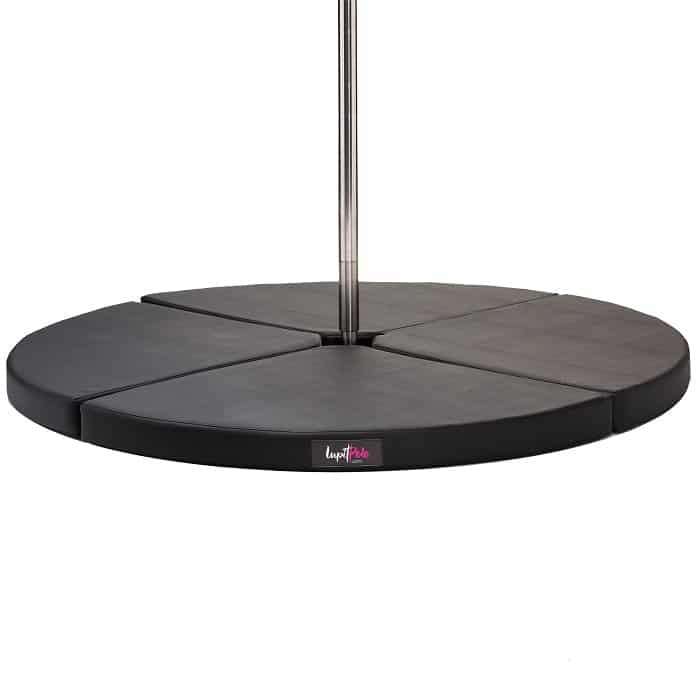
Exclusive Offer: Enjoy a 10% discount on crash mats for our valued readers. Use code ‘CRASH10’ at checkout to claim your savings. Click on the image to buy
Recovery Treatment: Enhancing Your Body’s Healing Process
Recovery treatment is essential for enhancing the body’s healing process and preparing for future training. It helps expedite recovery, eliminate toxins from the muscles (such as lactic acid), restore body temperature, and optimize the function of internal organs. By following these recovery guidelines, our bodies are better equipped to bounce back from intense exercise and return to pre-workout levels. This restoration process helps alleviate fatigue, reduce muscle soreness, and reset the body for subsequent training sessions. It’s important to note that warm-up and recovery activities are closely interconnected with the main workout, enabling our bodies to train effectively and safely.
Relaxation, Diet, and Hydration for Optimal Performance
Optimal performance in pole dancing requires attention to relaxation, diet, and hydration. Adequate relaxation is crucial for the body to function properly. Research suggests that athletes should aim for 8-9 hours of sleep, adjusting based on the intensity of their training. Proper nutrition plays a vital role in supporting the muscular system’s recovery from minor ruptures that may occur during training, as well as facilitating normal development. It is essential to consume nutrient-rich foods to meet these needs. Additionally, regular hydration is key to avoiding dehydration and maintaining peak performance. Drinking approximately 240ml of fluids every 15-20 minutes helps ensure proper hydration. By prioritizing relaxation, following a balanced diet, and staying hydrated, athletes can optimize their performance in pole dancing.
Avoiding Unorthodox Training Methods: Safe Stretching Practices
In their pursuit of rapid progress, many athletes are tempted to resort to unconventional training approaches. This may include engaging in intensive stretching exercises or seeking assistance from non-experts to apply excessive pressure. Unfortunately, these practices can lead to unnecessary injuries. It is crucial to prioritize safe stretching techniques guided by a professional instructor. Athletes should only perform stretching exercises after receiving proper training and understanding the appropriate time and type of stretches for their individual needs. Pressure should be applied gradually and within a tolerable range to prevent strain or injury. Throughout the stretching process, athletes should focus on deep and slow breathing for complete relaxation. If an instructor is involved, establishing a good rapport is essential to ensure adherence to safety guidelines. By following these precautions, athletes can minimize the risk of injuries and optimize their training outcomes.
Special Considerations: Menstruation and Pole Dancing
Women need to be mindful of their menstrual cycle when engaging in pole dancing. During this period, it is advisable to avoid body movements that elevate the uterus above the heart, as gravity can reverse the blood flow. This change in blood circulation may potentially lead to complications. It is recommended that women listen to their bodies and adjust their pole dancing routines accordingly during menstruation to prioritize their well-being and avoid any potential issues.
Epilogue
To sum up, every athlete or beginner in pole dance should have an annual appointment with a cardiologist or a pathologist to get official approval. Also, in cases of chronic diseases, the person ought to get advice from an expert. Keep in mind that there are health conditions that must be strictly monitored and, in some cases, render pole dancing or aerial acrobatics impossible to take up. Generally speaking, every athlete should inform his coach or the authorized medical team of his medical history, health status, and any forms of allergy or chronic diseases mentioned above.

